Maple Green Elementary 24-25
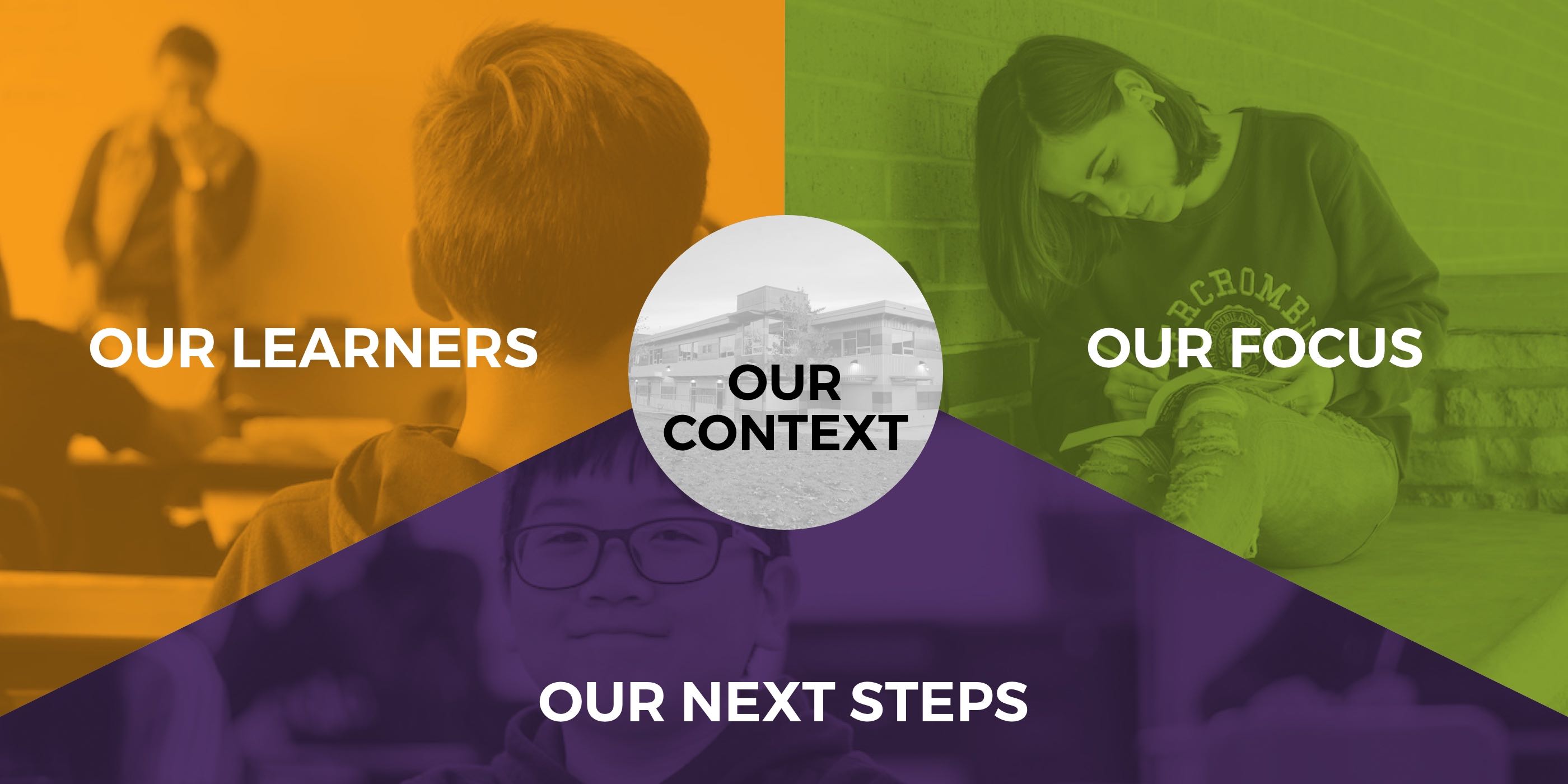

OUR CONTEXT
At Maple Green, we have come together to support our diverse learners. Through collaboration and goal setting, we strive to create a community where everyone feels safe, confident, and proud of all that they can, and will, achieve. We continue to promote positive learning opportunities that keep all learners engaged and motivated. Building a learner's confidence allows them to feel successful in their learning.
OUR LEARNERS
Literacy is a crucial life skill where our learners develop the ability to read, write, speak, and think. Teaching literacy to students gives them the ability to communicate clearly and effectively. Being able to communicate effectively allows students to grow independently and successfully.
By taking the time to build relationships with our diverse learners, various strategies have been put into place to support all the needs of our students. Providing many opportunities for student to share their ideas has helped them to gain confidence in their oral language skills. The science behind reading has allowed educators to create targeted lessons to promote literacy within the classroom and work towards reading and writing proficiency.
Below is a reading and writing proficiency scale for Gr. 1/2 students.
Reading Data: Primary classroom teachers used the easyCBM reading assessment with your students for Terms 1-3. By looking at the graph, there was an increase in proficient (reading at grade level). It should be noted that these classes began using the UFLI program within daily literacy instruction.
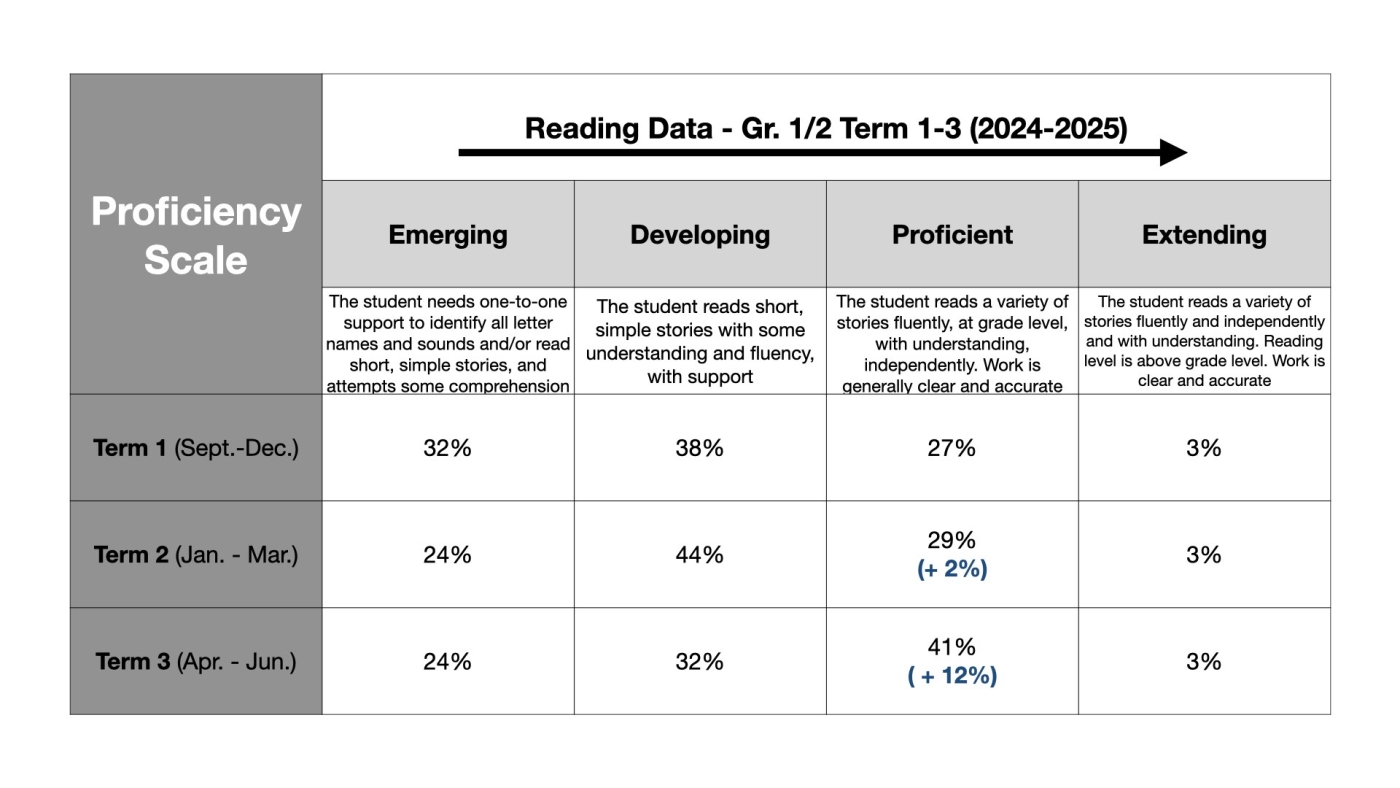
Below is a proficiency scale for writing data for Gr. 1/2 students.
Writing Data: Classroom teachers used the Writing Quick Scales to assess student writing over the three terms. Through in-class LST support, UFLI, and a focus on high frequency words, students made a considerable improvement in writing at a proficient level from Term 2 to 3.
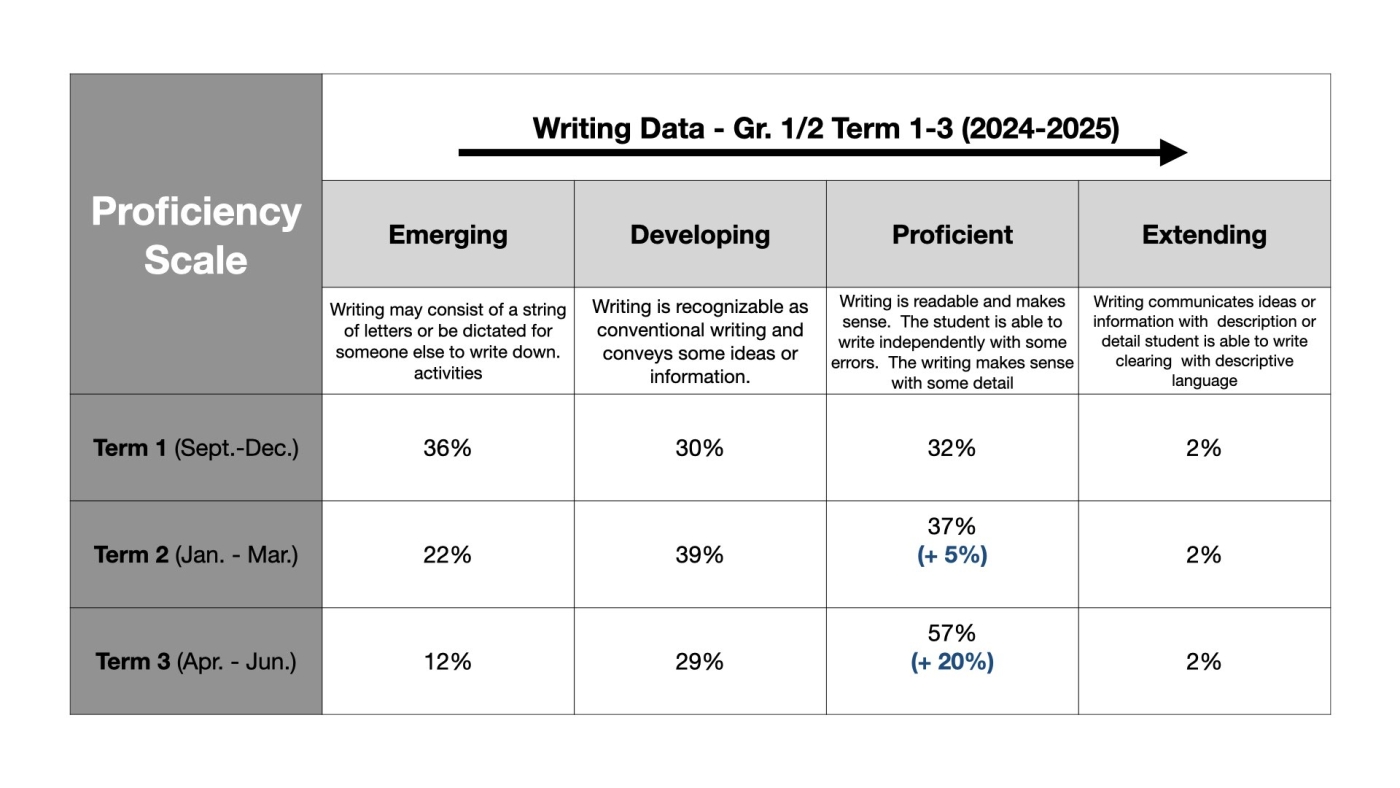
Intermediate Reading Data: Classroom teachers in four different classrooms, with learners in grades 5 to 7, used DIBELS to assess students' Oral Ready Fluency at the beginning and end of the year. Our data shows that, while students are making individual gains, they are not keeping up with the more difficult reading passages that are assessed later in the year. This is especially true of students who are already at risk in their reading.
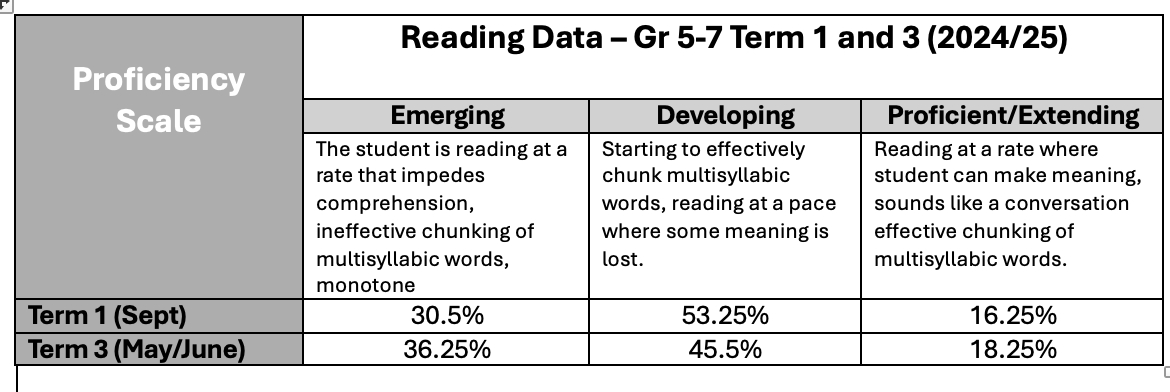 Here is the data from one specific class. In this class, there was targeted reading instruction, including focus on reading out loud every day, introduction to new vocabulary daily, a focus on learning words by knowing their root words and how to break them down, and doing Repeated Reading where students graphed their own reading data to take ownership of their learning.
Here is the data from one specific class. In this class, there was targeted reading instruction, including focus on reading out loud every day, introduction to new vocabulary daily, a focus on learning words by knowing their root words and how to break them down, and doing Repeated Reading where students graphed their own reading data to take ownership of their learning.

As a school community, staff and students have been collaborating through:
- Supporting teachers with explicit systematic orthographic skills (decoding: reading/encoding: spelling)
- In-Class LST model for Grades K-7
- Incorporating the UFLI reading program within classroom instruction
- Wilson Reading System - reading intervention program
- Book Club Opportunities: Responding to Readers and Strive for Five
- Lunch and Learn opportunities
OUR FOCUS
Literacy is a crucial life skill where our learners develop the ability to read, write, speak, and think. Teaching literacy to students gives them the ability to communicate clearly and effectively. Being able to communicate effectively allows students to grow independently and successfully.
Our focus has been on developing reading and writing skills through the science of reading (Shifting the Balance), incorporating story workshop, and targeted instruction around phonemic and phonological awareness. By using Performance Quick Scales for assessment, student progress has been tracked through each term. This has allowed educators to have a clear image of student growth over the course of the school year.
Equipping parents in tools to reinforce skills explicitly taught has allowed students to work on the same skills at home and build their confidence. Below is a picture of a tool that parents can work on with their children at home.
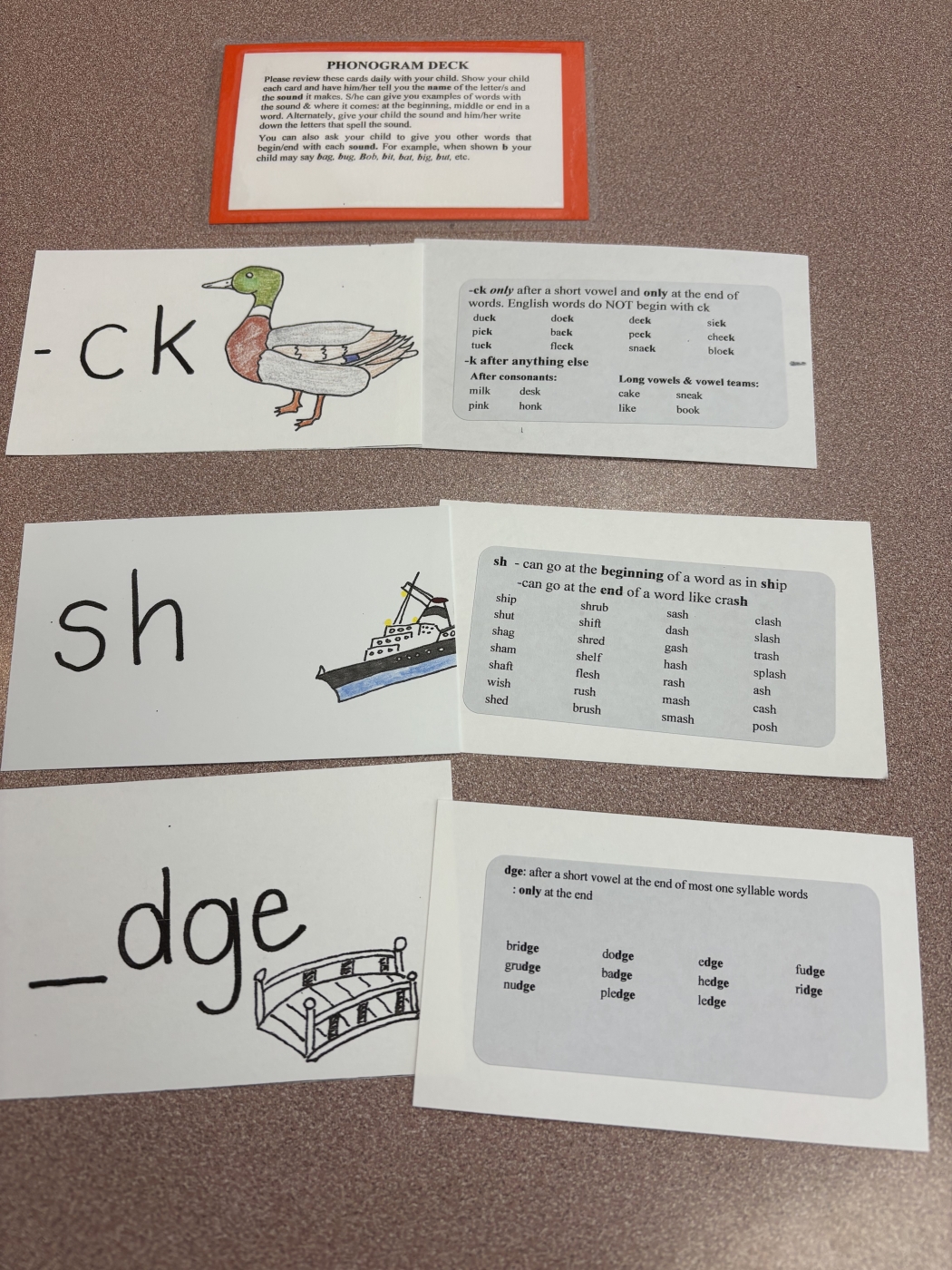
This school year, a focus for teachers has been on in-service LST and classroom teachers are focused on diagnostic teaching.
- Where are students at?
- How do errors inform instruction and/or intervention?
Primary Focus
1. Screening/Assessments:
- Early Intervention
- Incorporating the Wilson Reading System reading intervention program
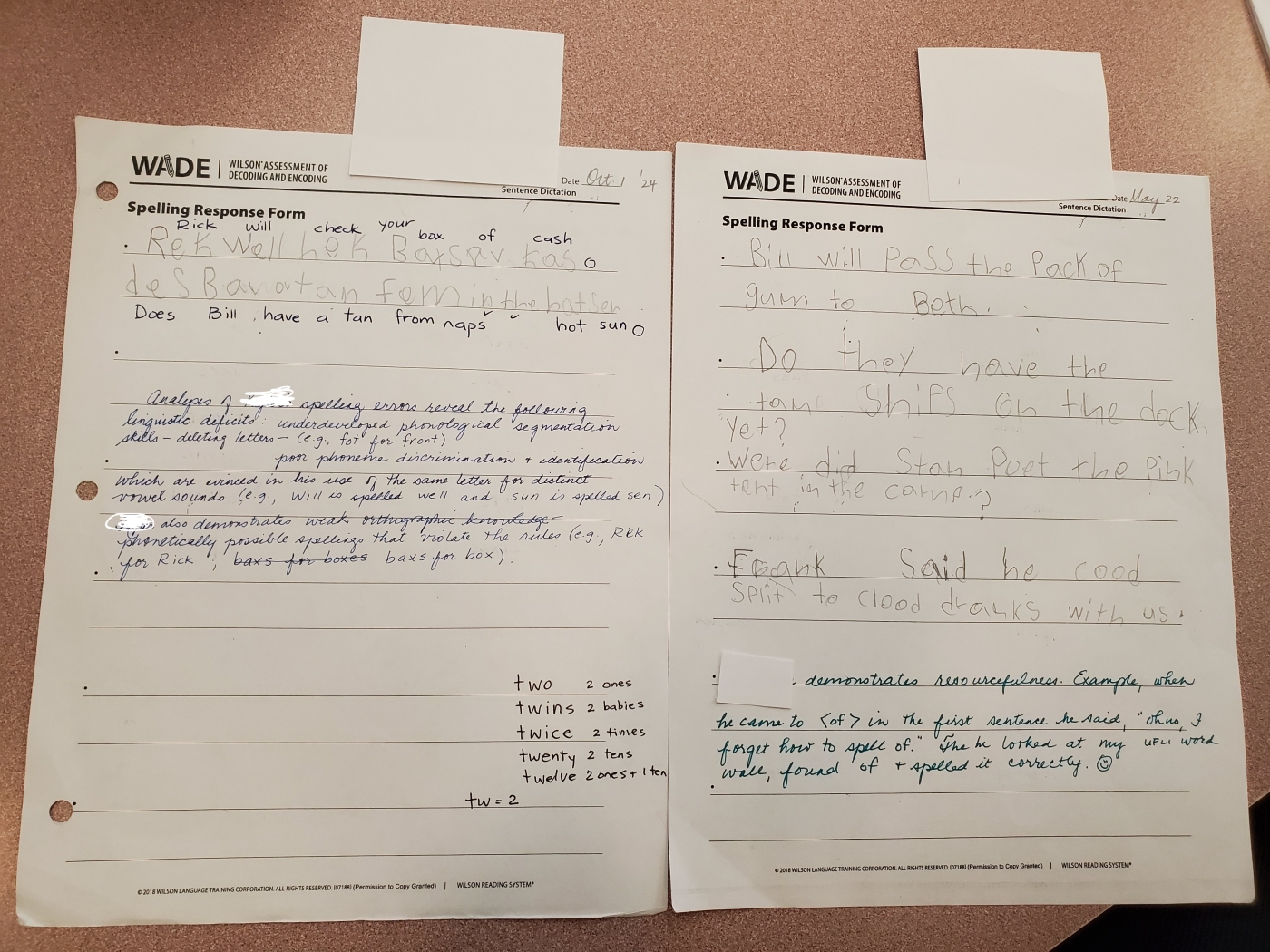
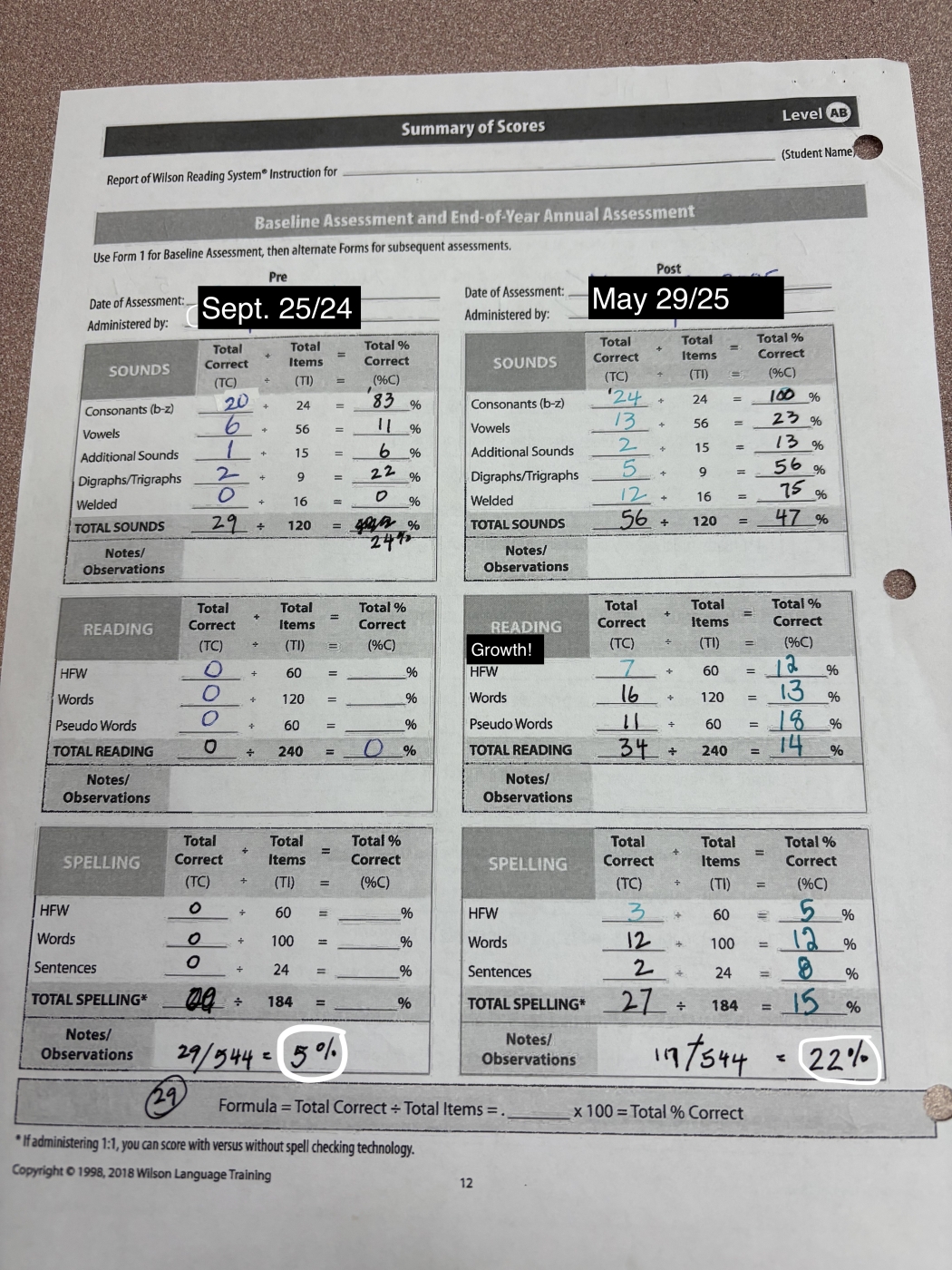
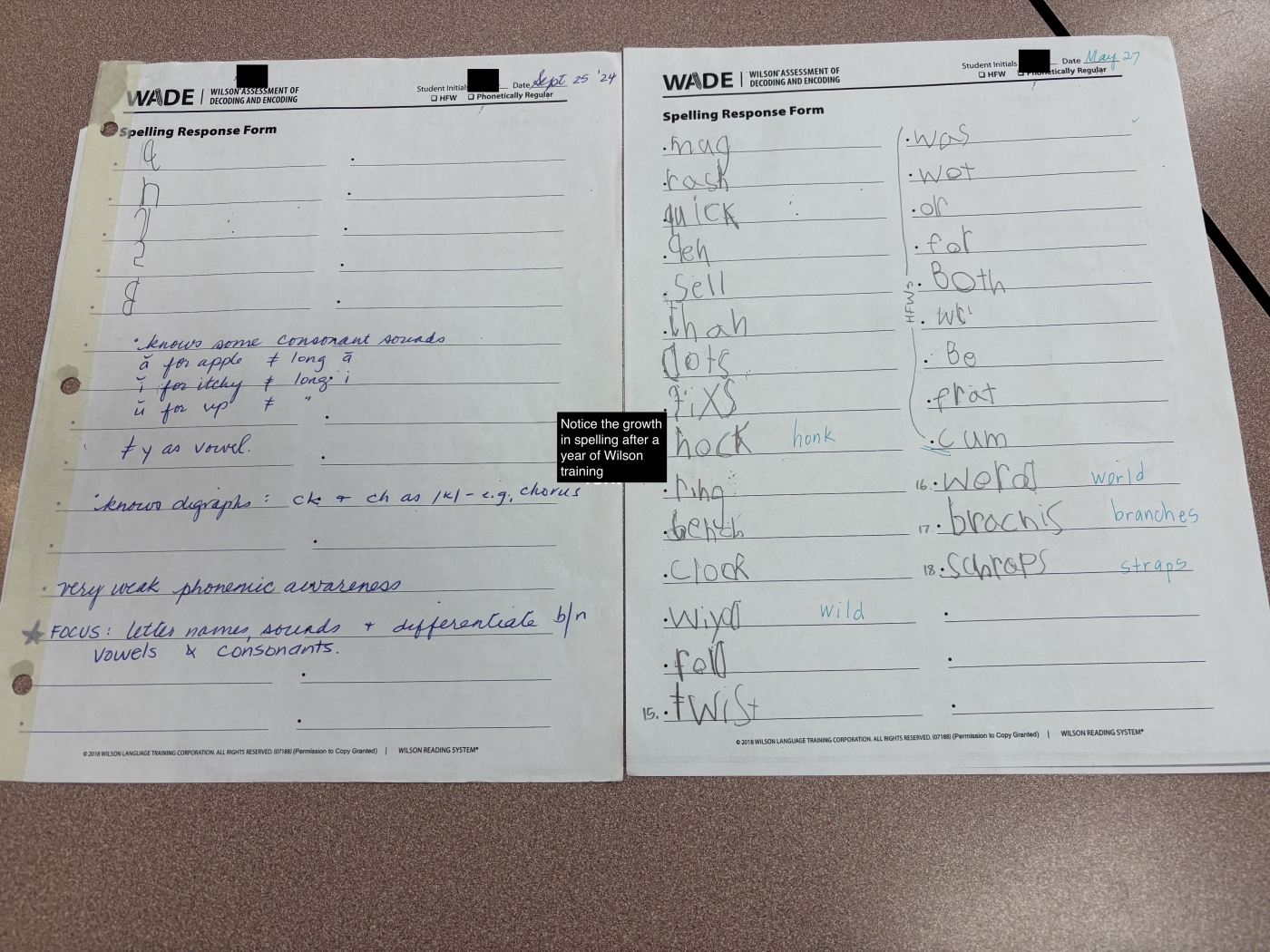
Below is a graph to highlight the growth that students have made within the Wilson Reading Systems this school year. This data is based on a pre assessment (Sept. 2024) and a post assessment (June 2025). Overall, the data shows a growth with letter sounds, reading (real words, high frequency words, and nonsense words), and spelling. Students going through the Wilson program did not just make gains with their reading and spelling skills, they also gained confidence and motivation. They can now see themselves as a reader and writer.
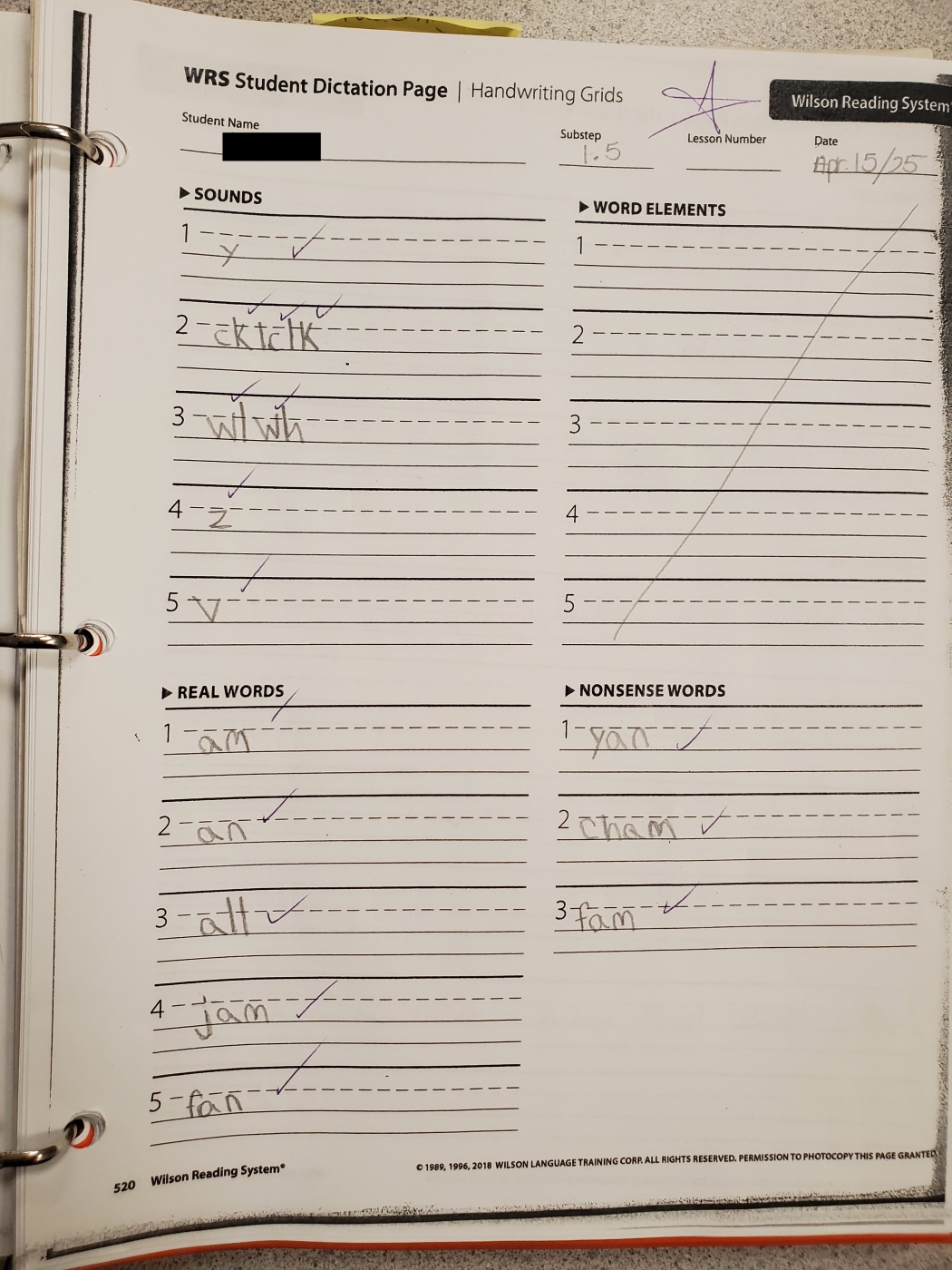
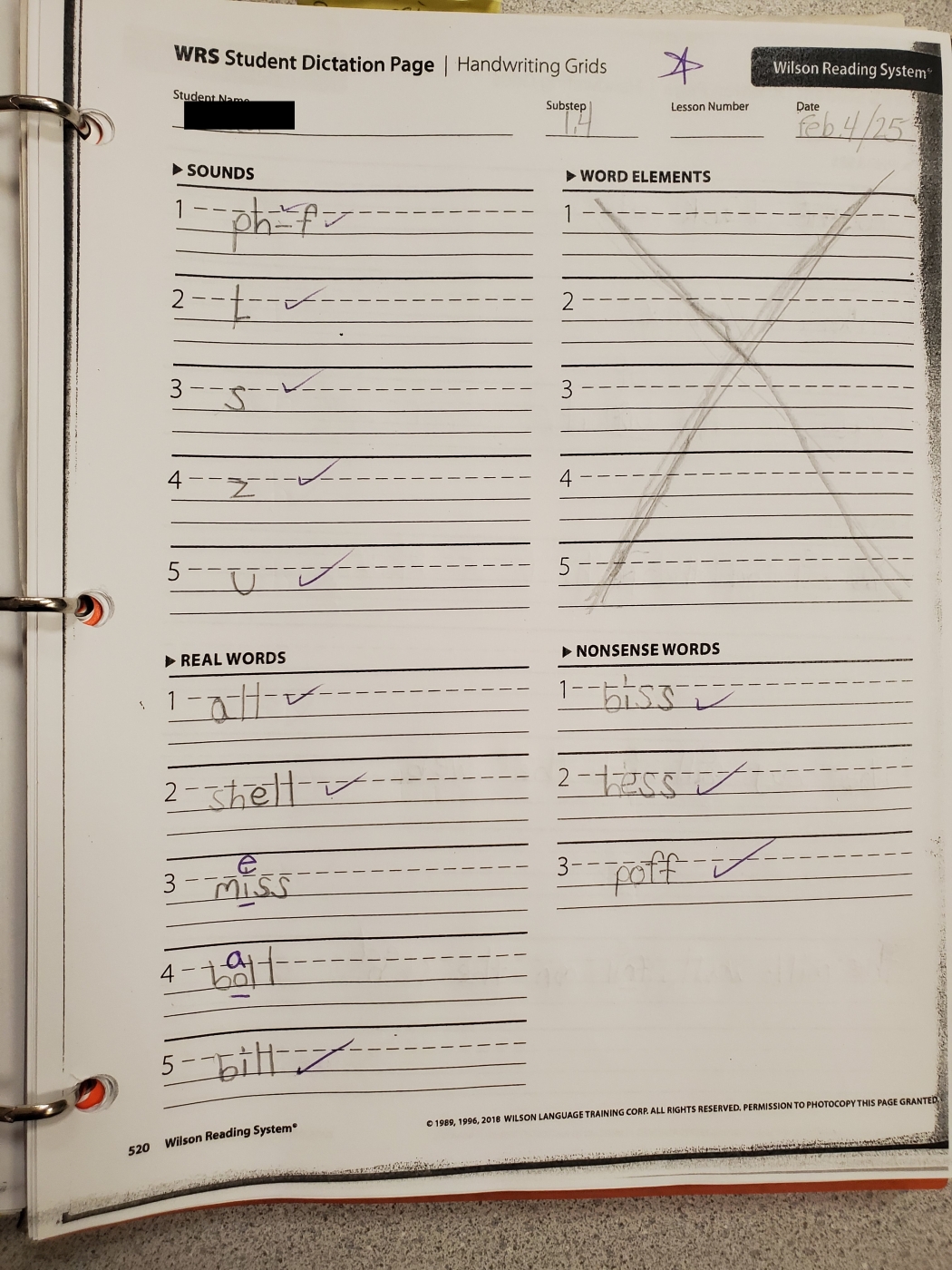
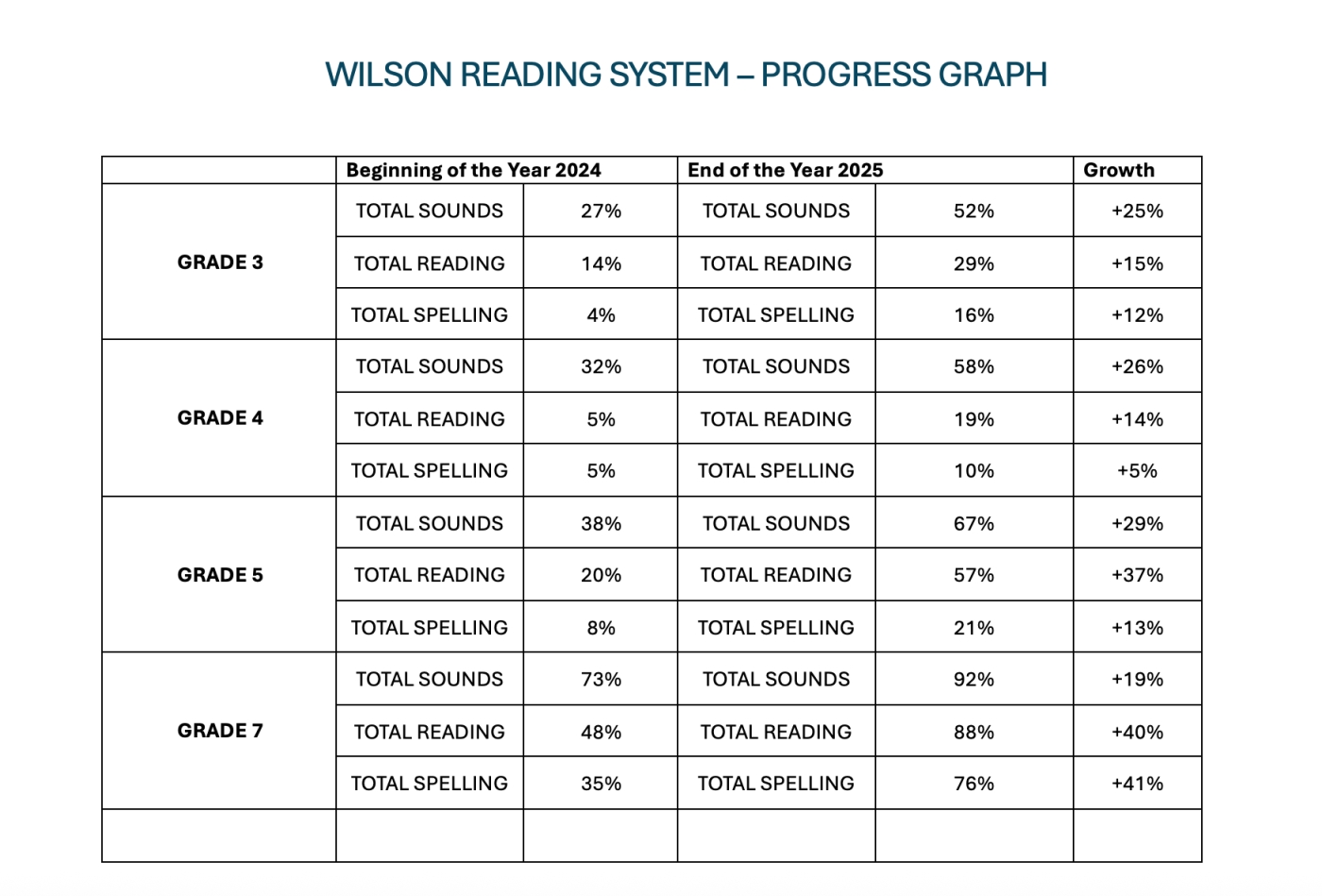
2. Leveraging Encoding:
- Decoding (going from text to speech) and Encoding (going from speech to text) has not only been a focus for Maple Greens's in-service training, but also a focus of classroom instruction (UFLI) and intervention. Having said that, teachers are embracing explicit and systematic spelling instruction to leverage reading skills.
- In the photos below, students are given cards split into 2 pieces (clock, chick, leaf). Student can move the pieces around to create new words (l-ock, l-ick)
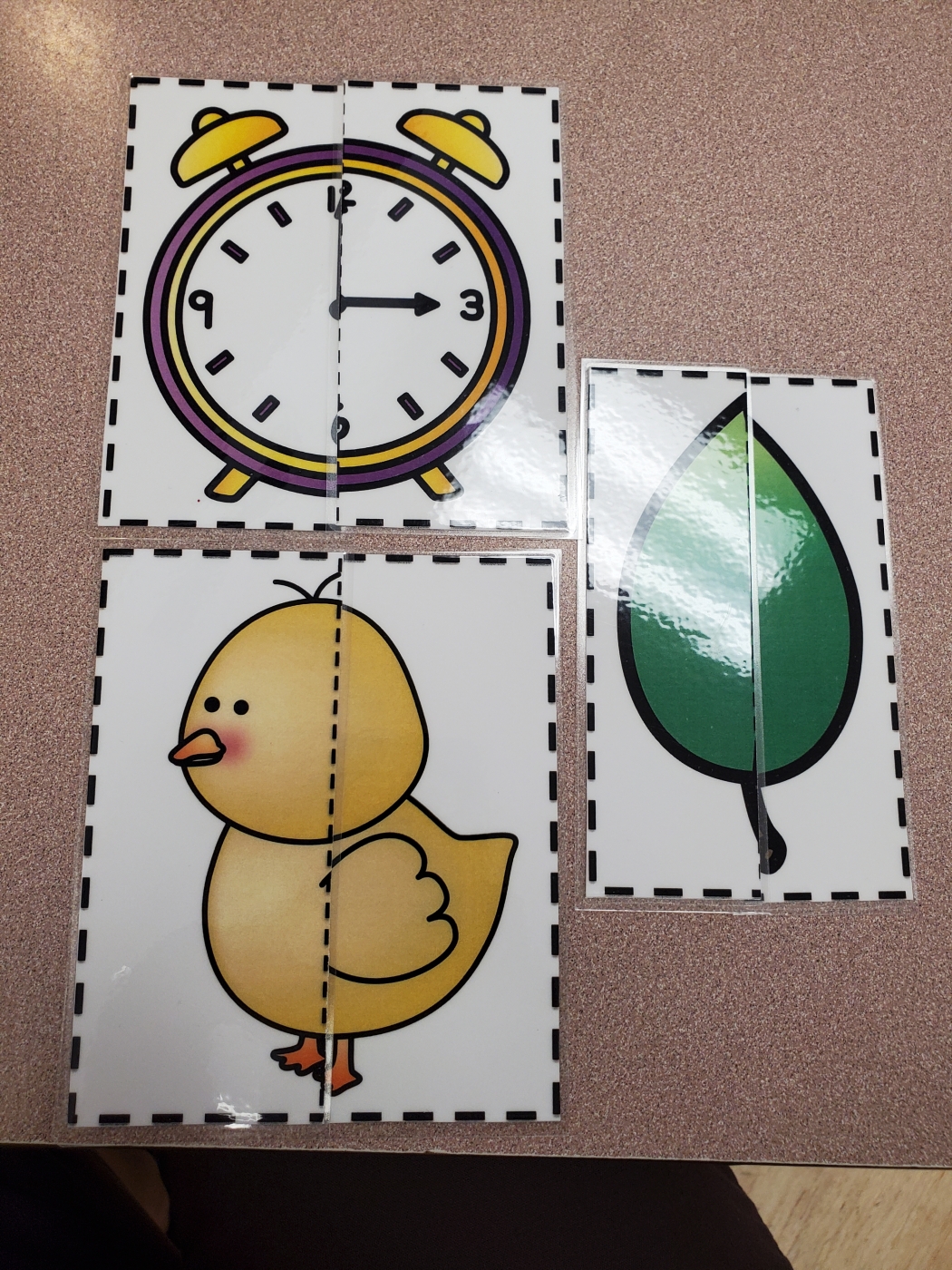
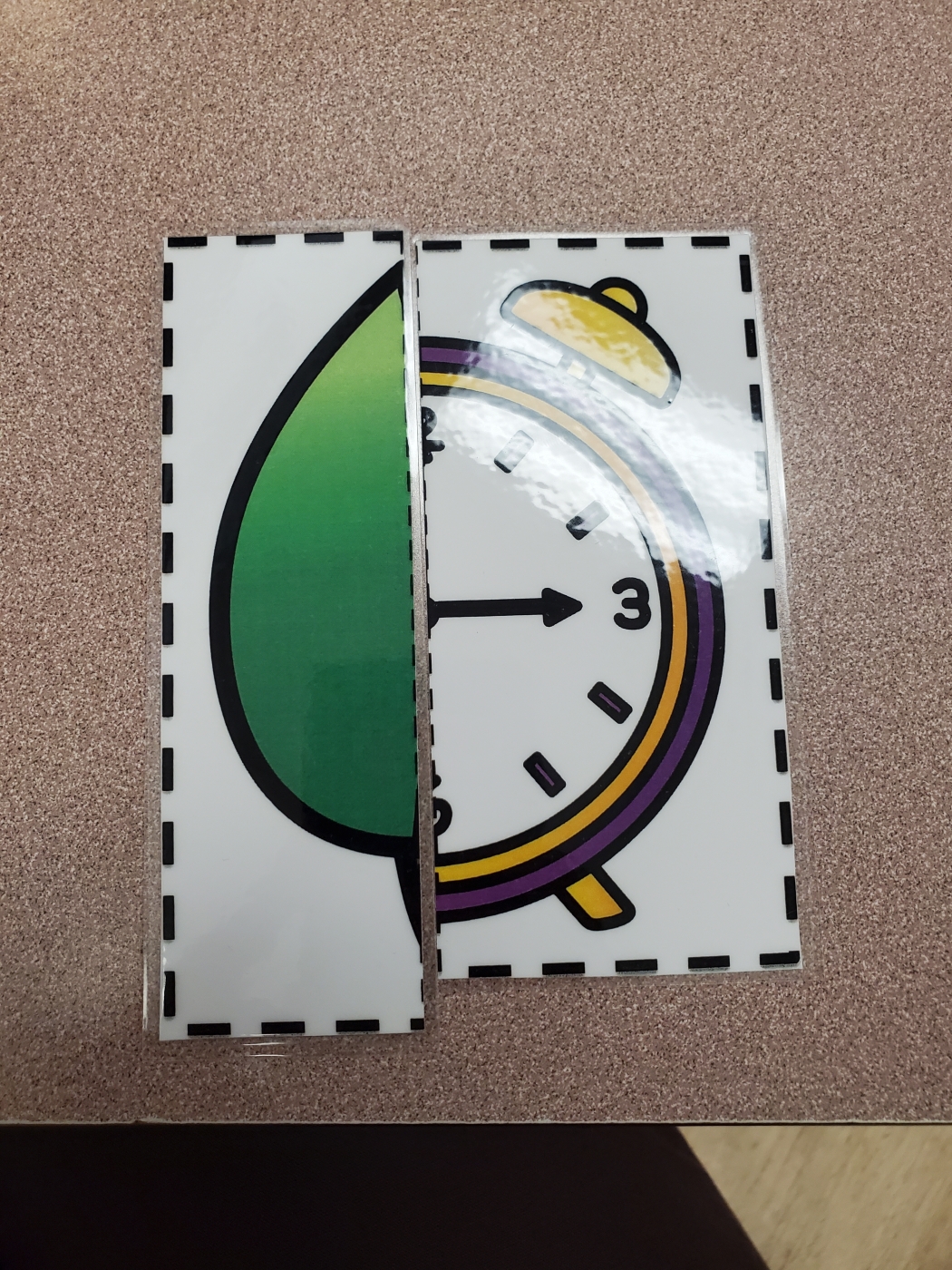
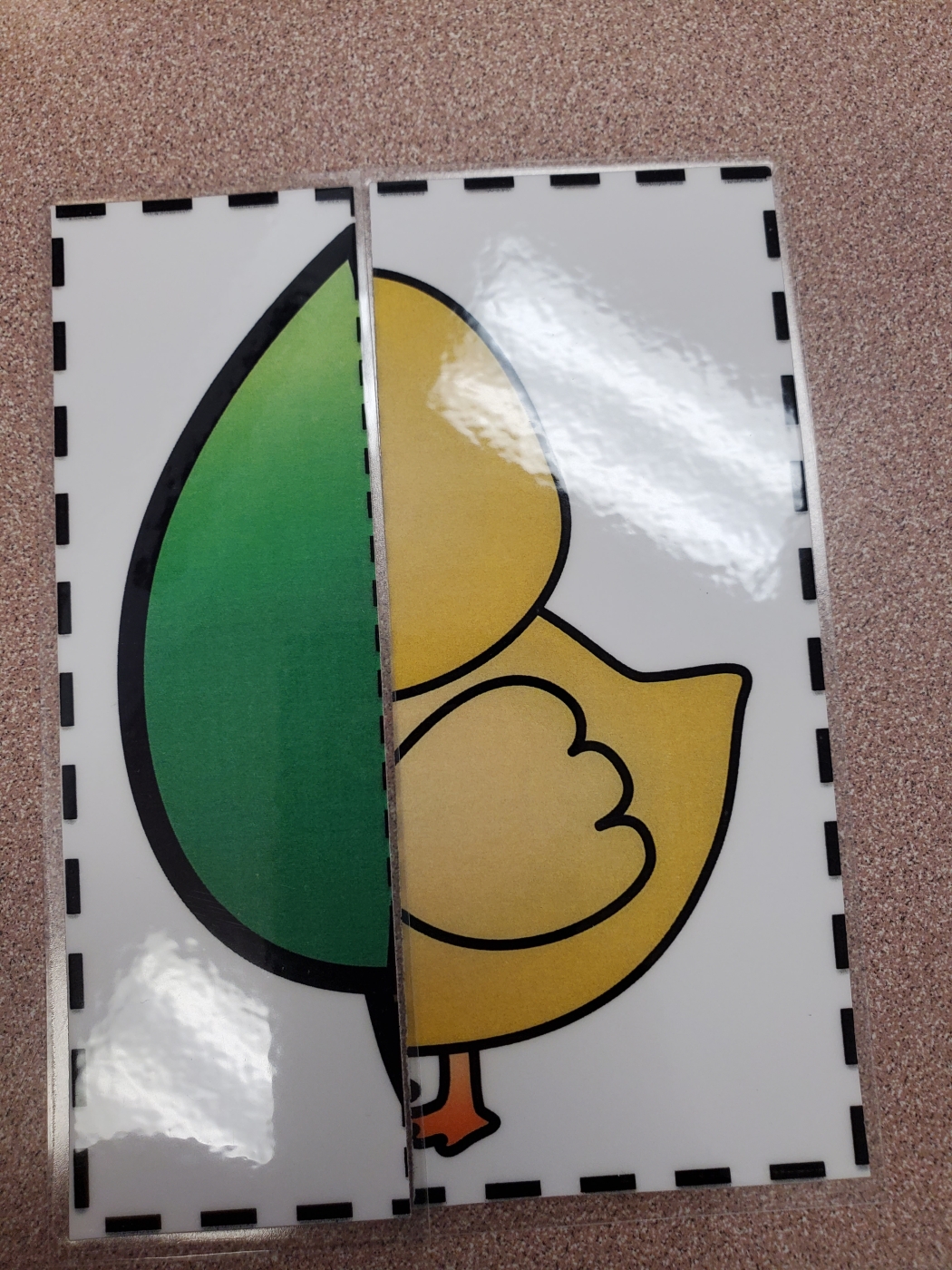
Intermediate Focus
This year, the intermediate team at our school made reading a key instructional focus, with a dual emphasis on fluency and vocabulary development to support overall comprehension. To monitor student progress in reading fluency, we used DIBELS (Dynamic Indicators of Basic Early Literacy Skills), specifically tracking Oral Reading Fluency (ORF) scores at the beginning, middle, and end of the year. ORF measures how many words a student can read correctly in one minute from a grade-level passage, serving as a strong indicator of reading fluency and, by extension, comprehension. Fluent readers are able to decode text effortlessly, allowing them to focus more on understanding meaning. In addition to fluency, we placed a strong emphasis on vocabulary building, recognizing that a robust vocabulary is essential for making sense of increasingly complex texts. By strengthening both fluency and vocabulary, we aimed to equip students with the tools they need to become confident, thoughtful readers capable of deep comprehension.
These two photos show the growth on Oral Reading Fluency from the beginning of the year (in pink ink) to the end of the year (in blue ink) for two students in Grade 6. The focus in this classroom all year was building fluency and vocabulary. The first student moved from a developing score in Grade 6 to a proficient. The second moved form an emerging score in Grade 6 to a developing. Both students saw huge growth throughout the year.
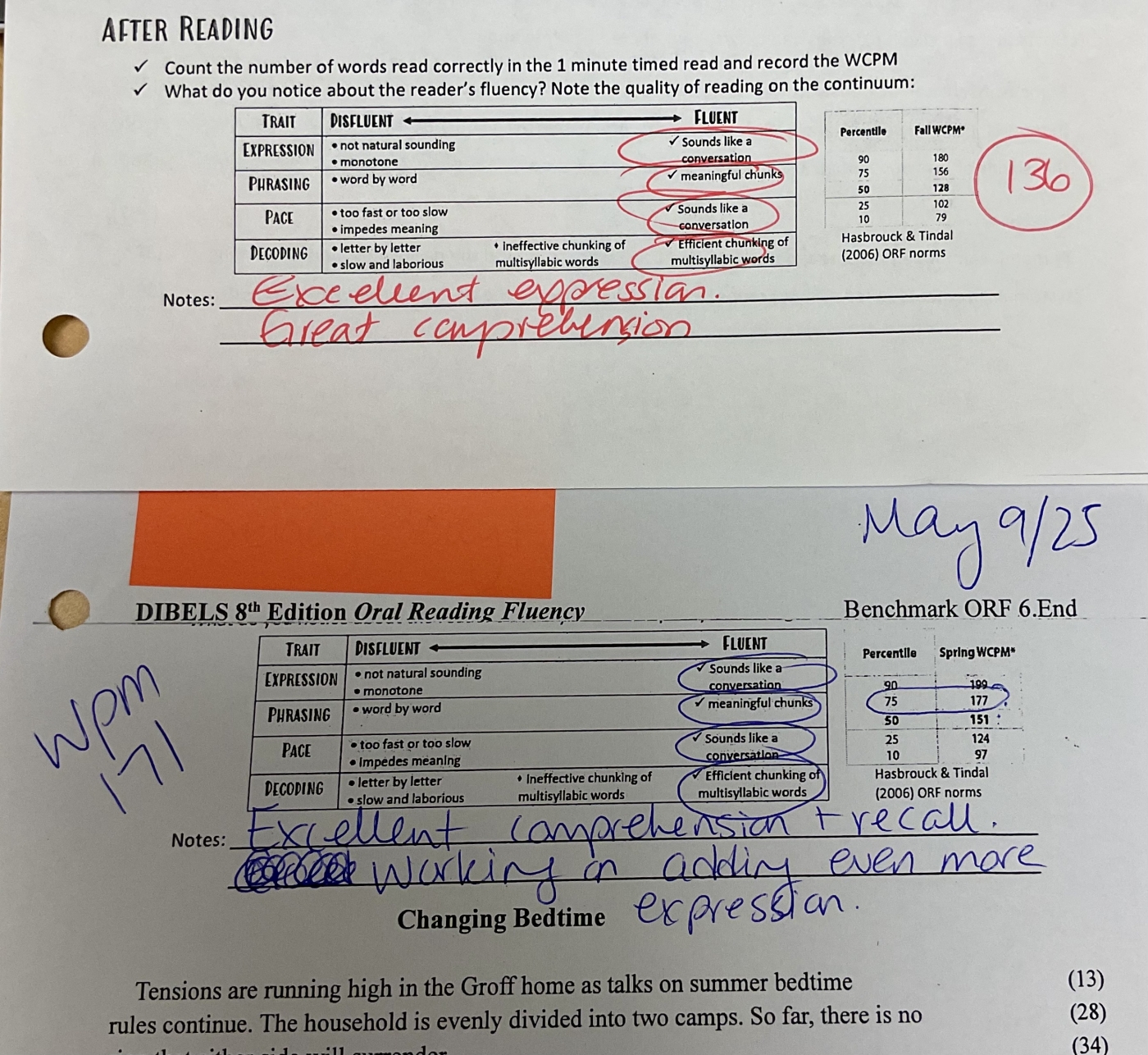
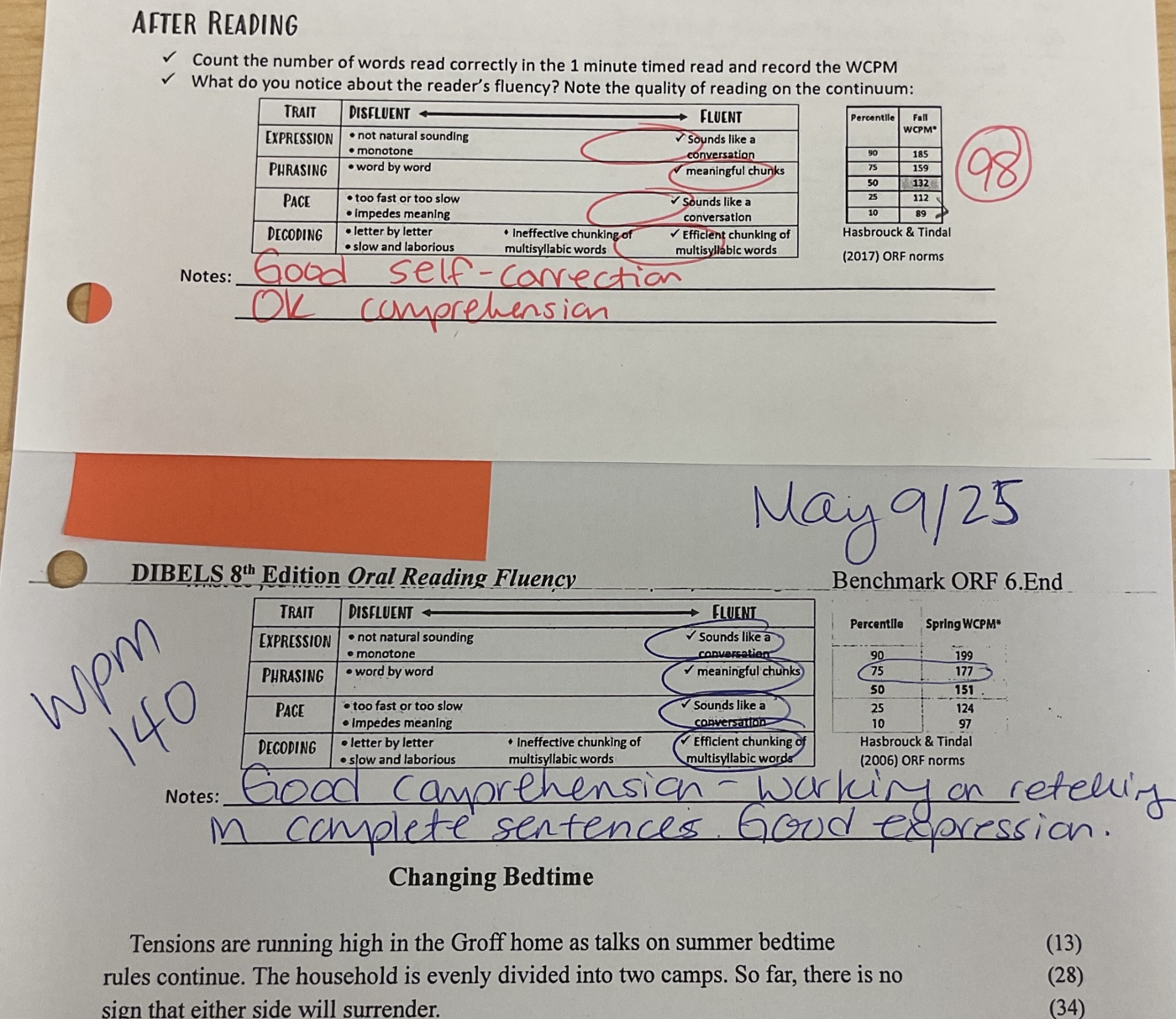
Our focus connects with the Core Competencies of communication, creative thinking, and personal awareness and responsibility.
Within the communication competency, students can work through the following "I Can..." statements: "I can communicate confidently, using forms and strategies that show attention to my audience and purpose" and "I can create a wide range of effective communication that features powerful images and words."
Within the creative thinking competency, students work on applying critical and reflective thinking to acquire and interpret information, and make choices about how to communicate their ideas.
Within the personal and social competency, students communicate to express their needs and seek help when they need it, and to advocate for themselves.
These competencies connect with the following curricular competencies for literacy:
- reading fluently at grade level
- use developmentally appropriate reading, listening, and viewing strategies to make meaning
- communicate using sentences and most conventions of spelling, grammar, and punctuation
- exchange ideas and perspective to build shared understanding
- create stories and other texts to deepen awareness of self, family, and community
Below is a list of goals that students have been working on throughout the school year:
- Letter recognition and sounds to obtain more sight word vocabulary while reading
- Using knowledge of language patterns and phonics to decode words
- Working towards being proficient in blending and reading higher frequency
- words
- Reading fluently at grade level (grade level text) - decoding words and self-correcting with minimal support
OUR NEXT STEPS
Assessments:
Our next steps would be to continue to track the progress that students have made (primary and intermediate grades). Through regular assessments (such as Dibels and Easy CBM), students and teachers will be able to see the growth they have made and outline strategies needed to continue working towards reading and writing proficiency. Reading and writing assessments will play a key role in identifying student need and student growth. Once student needs are identified, then explicit teaching can occur.
Targeted Instruction:
Continuing with the Wilson Reading Systems will allow students to receive intensive literacy instruction. Through a pre assessment, LST will be able to target instruction around literacy. The program allows students to gain confidence in their reading and writing skills by learning letter sounds, written dictation, and story reading.
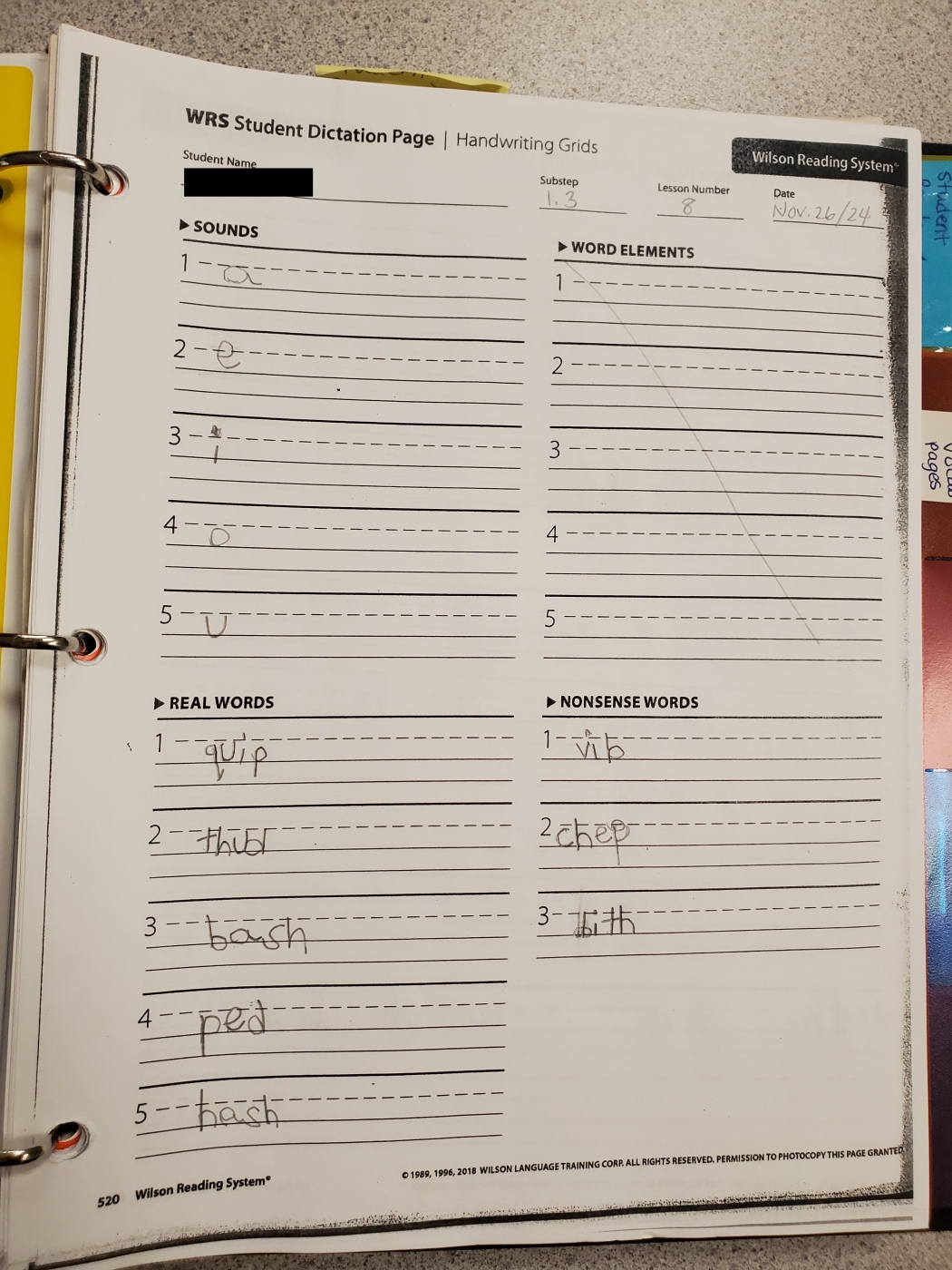
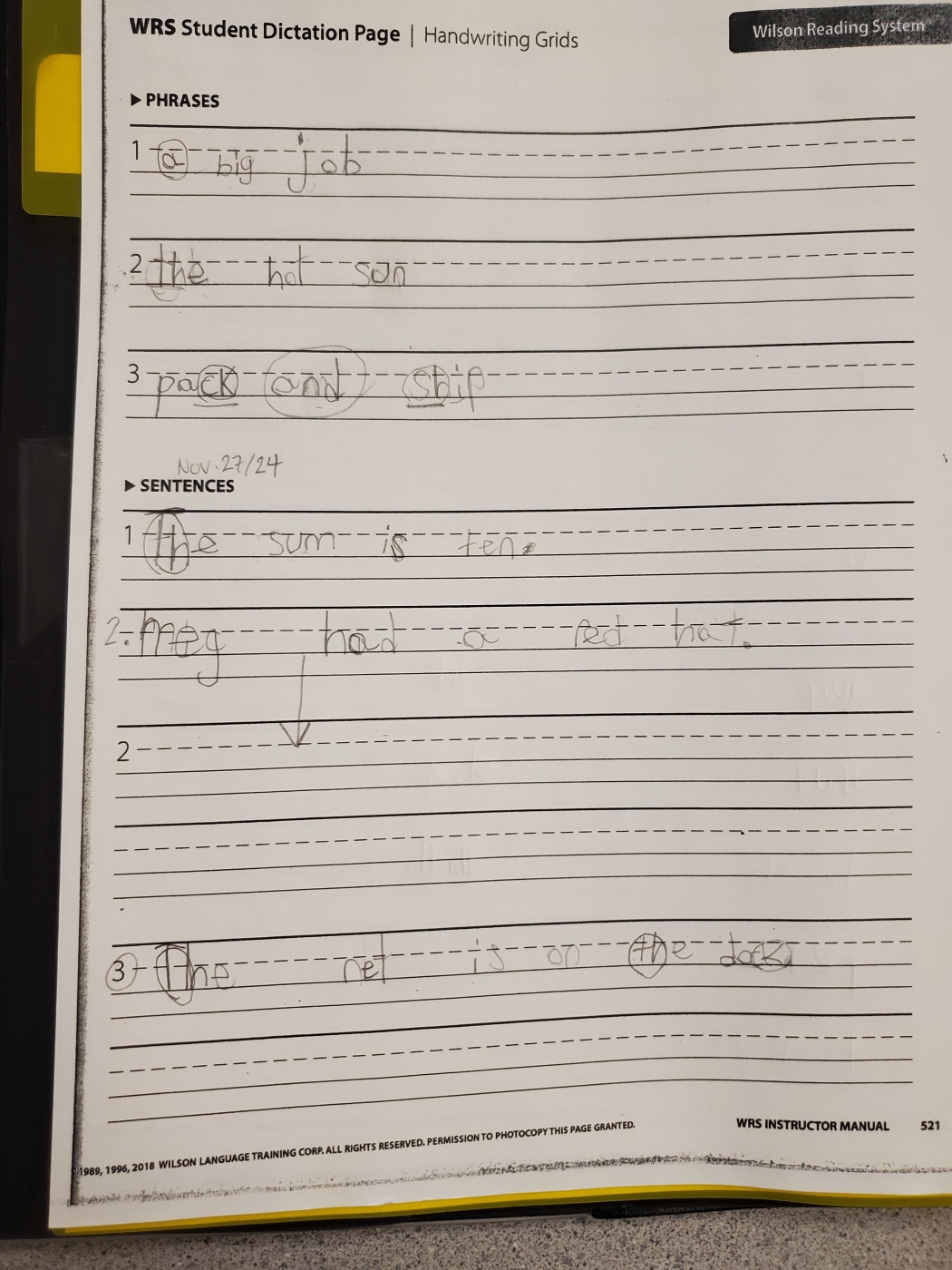
Having targeted instructions around reading, writing, and oral literacy skills will support students in their learning. As a school, we were introduced to some new reading assessments this year, such as Dibels and Easy CBM to track student reading and fluency scores. Using these assessments will continue to support teachers in their goals towards teaching explicitly to a student's need.
Many teachers are also interested in incorporating Repeated Reading (reading a passage multiple times to increase fluency scores). This would also benefit older students, as it can be set up as a big buddy activity. A few classes tried this activity this year and it was a great success. The intermediate students were the 'teachers' and supported the younger student with their reading. The students leading the activities also made gains in their fluency scores. Teachers have shown an interest in participating in this activity next school year.
Collaboration Time:
Allowing grade group teachers to have time to collaborate and discuss student work, will allow them to obtain valuable information about their learners and best ways to support moving forward. For example, teachers continue to collaborate by platooning during Daily 5 so that students can achieve success at their level. In-class LST was new for our school this year. Using a literacy station approach seemed to be a great way for classroom teacher and LST to target as many students as possible. Even though it took some time to find a routine that worked best for each class (based on needs) it seemed to be a positive experience. A focus moving forward would be to continue this model of LST, and still continue to pull out model when working with students who need the intensive literacy intervention (Wilson reading system).
Early Literacy Intervention:
Early literacy intervention has been a focus for our younger learners, and we will continue to provide such supports in the upcoming school year. Being able to provide in-class early literacy interventions amongst the primary will allow them to gain a stronger foundation for reading and writing. Learning and working through the Wilson Reading Program, will allow for more targeted intervention for those students who have been struggling with their reading skills. Intervention will also move into the intermediate grades with late literacy interventions as well.
Intermediate Learners:
As we saw from the intermediate data, students in grades 5-7 who are behind in their reading, are still making individual gains, but at much slower rate than they should be. Our focus will be to target those vulnerable learners with direct instruction and small group work with support from the LST team.
Through various professional development workshops around the teaching of phonological awareness and how to assess student reading writing, we, as a school, will continue to support students with as many strategies as we can, we hope to promote independent readers and writers, that are proud of their work and themselves. Ongoing collaboration times to discuss assessment and plan lessons will allow us as a school to support our diverse learners.
